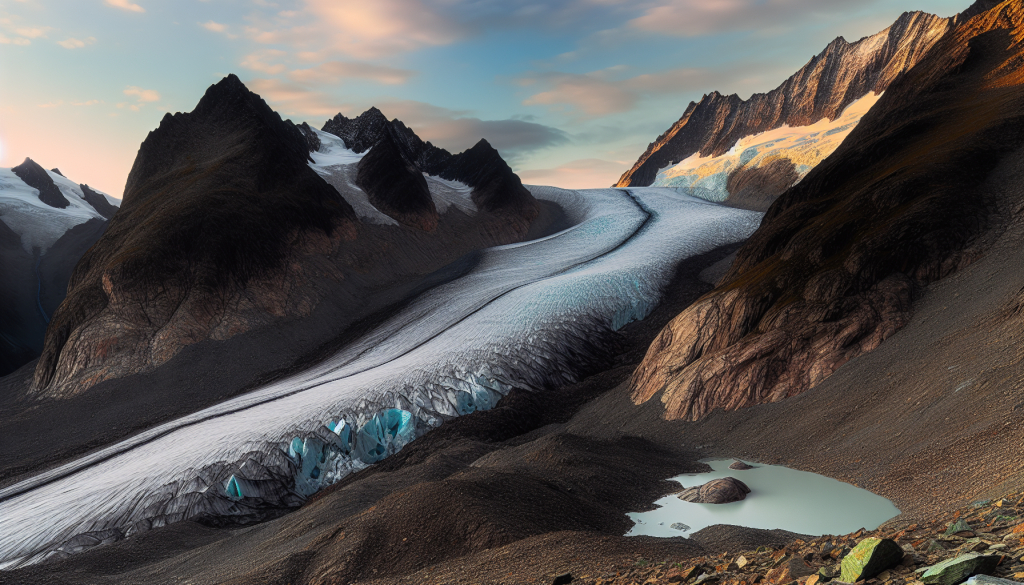And the glaciers of Switzerland keep shrinking

image:
By September 2025, the Claridenfirn Glacier (GL) had melted entirely, with no snow cover remaining.
Credit: Matthias Huss / VAW / ETH Zurich
Despite being the designated United Nations International Year of Glacier Preservation, Switzerland continued to experience intensive glacier retreat in 2025. A snow-poor winter, followed by extreme heat waves in June, caused glaciers to come close to matching the severe losses recorded in 2022. By early July, winter snow reserves had already vanished, and the melting of glacier ice started unusually early. Slightly cooler weather in July provided a brief respite, avoiding more drastic damage. Still, nearly 3% of the nation’s total glacier ice volume melted this year—ranking as the fourth largest annual loss behind the years 2022, 2023, and 2003. That makes 2025 a significant contributor to the fastest decade of glacier decline, with Swiss glaciers shrinking by roughly 25% since 2015. Over 1,000 smaller glaciers have already vanished.
Many glaciers lost their winter snowpack entirely, sometimes all the way up to their summits. Consequently, ice thickness dropped by over two meters on glaciers like the Claridenfirn in Glarus, the Plaine Morte Glacier in Bern, and the Silvretta Glacier in Grisons. Glaciers located further south in Valais, such as the Allalin and Findel Glaciers, experienced less melting of about one meter in thickness.
Insufficient Snowfall in Winter
The 2024/2025 winter brought little snowfall coupled with exceptionally warm conditions, marking the third warmest winter half-year (October–March) since tracking began. Some northern and central regions of Grisons saw record-low snowfall. By the end of April, snow levels on Swiss glaciers were estimated to be 13% lower compared to the 2010–2020 average. June 2025, the second warmest on record, led to rapid snowmelt even at the highest elevations. Though July was somewhat cooler and wetter, a major heat wave in August raised the freezing line to over 5,000 meters in some areas. Altogether, the summer brought above-average warmth. A few cold fronts between July and September brought limited fresh snow above 2,500 meters—but this only lingered at the highest peaks.
"The ongoing loss of glacier mass is also weakening mountain stability," explained Matthias Huss, Director of GLAMOS. "We saw this clearly with events like the rock and ice avalanche in Lötschental valley, which buried the village of Blatten."
The Swiss Commission for Cryosphere Observation (SCC), part of the Swiss Academy of Sciences (SCNAT), monitors changes in snow, glaciers (GLAMOS), and permafrost (PERMOS) across the country. This commission coordinates the national monitoring networks, supported by organizations such as the WSL Institute for Snow and Avalanche Research SLF, the Swiss Federal Office for Meteorology and Climatology (MeteoSwiss), ETH Zurich, and the universities of Zurich, Fribourg, and Lausanne. They work together with applied research institutions like SUPSI and receive funding from offices including the Federal Office for the Environment (FOEN) and swisstopo, under the umbrella of the Swiss Global Climate Observing System (GCOS).
Additional Information
The SCNAT is a national organization that brings together around 35,000 experts. It plays a vital role in promoting scientific understanding at local, national, and international levels. With a strong focus on cultural and economic development through science, SCNAT supports policy-making, encourages public engagement with science, shares expert knowledge, and fosters the development of future scientists. It operates as part of the Swiss Academies of Arts and Sciences consortium.
ETH Zurich hosts the Glacier Monitoring in Switzerland (GLAMOS) program, a long-term research initiative that observes glacier changes throughout the Swiss Alps. It collaborates closely with the Department of Geosciences at the University of Fribourg and the Geography Department at the University of Zurich. This monitoring is overseen by the Cryospheric Commission of the Swiss Academy of Sciences and is funded by the Federal Office for the Environment (FOEN), MeteoSwiss through GCOS Switzerland, and SCNAT. Further support comes from the Federal Office of Topography, swisstopo.
Method of Research
Observational study
Subject of Research
Not applicable
Article Title
Glaciology Report: And Swiss glaciers continue to melt
Article Publication Date
1-Oct-2025
